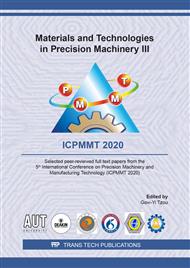p.1
p.12
p.21
p.27
p.33
p.41
p.48
p.56
p.64
Improvement of Mechanical Properties of Multiple Surface Rolled Pure Copper
Abstract:
High strength can be achieved by severe plastic deformation but at the cost of ductility. A novel strategy, which named multiple surface rolling was applied on a homogeneous annealed pure copper to break the strength and ductility trade-off. A combination of high strength and acceptable ductility was achieved in copper strips after submitted to multiple surface rolling. The detail microstructure evolution rolled samples were characterized by EBSD observation and compared with the initially annealed ones. The average grain size does not show significant deviation in both initially annealed and multiple surfaces rolled copper. Detailed observations show a heterogeneous distribution of low angle grain boundaries through thickness direction. The low angle grain boundaries and misorientations revealed the potential strengthening mechanisms in the material. Both microstructural characterization and numerical simulations indicate that multiple surface rolling contributes to strain hardening at the sample surface, while the interior layer was undergoing elastic deformation or partial plastic deformation. This heterogeneous deformation renders copper sheet with a combination of high strength and ductility.
Info:
Periodical:
Pages:
33-40
Citation:
Online since:
October 2020
Authors:
Keywords:
Price:
Сopyright:
© 2020 Trans Tech Publications Ltd. All Rights Reserved
Share:
Citation:


